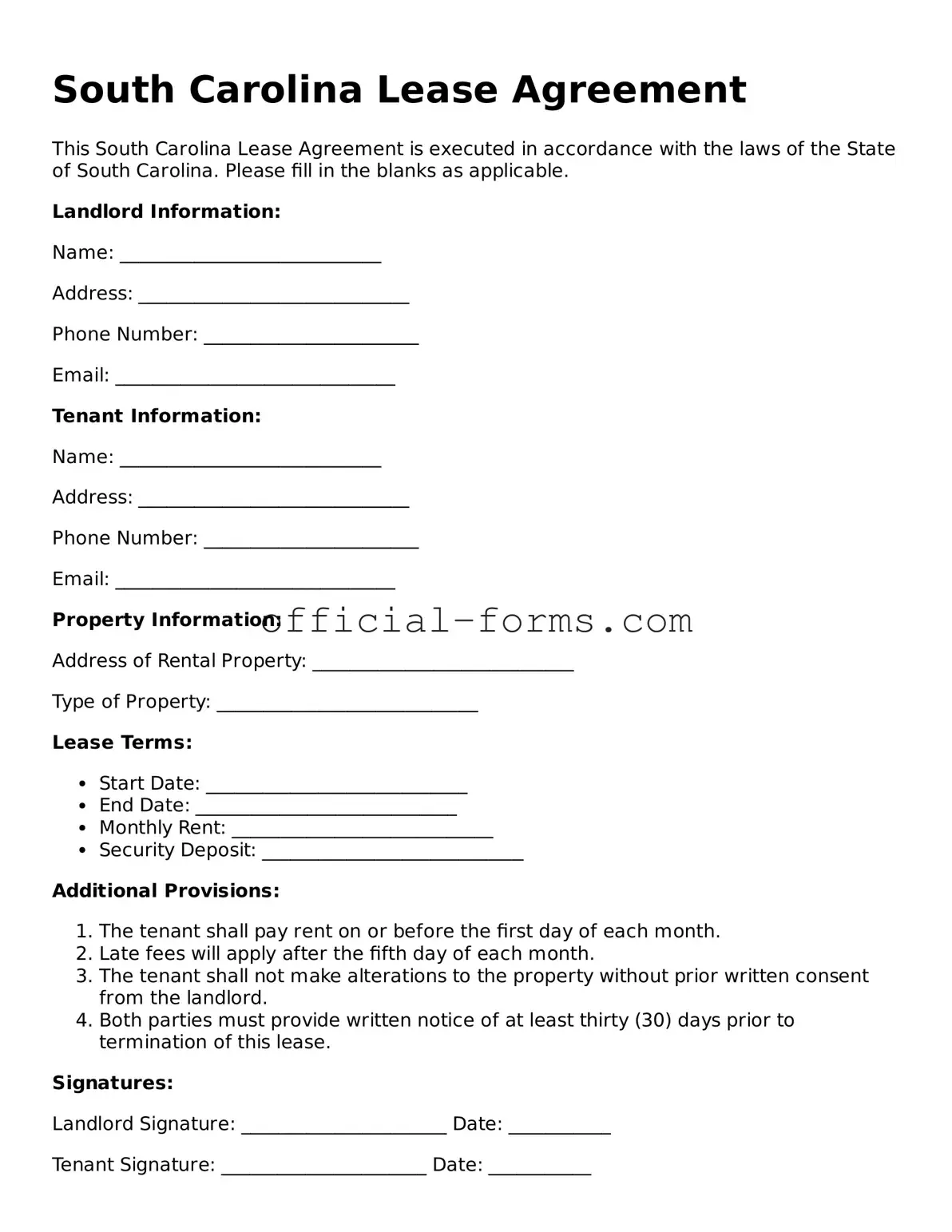When entering into a rental arrangement in South Carolina, understanding the Lease Agreement form is crucial for both landlords and tenants. This document serves as a binding contract that outlines the rights and responsibilities of each party involved. Key aspects of the form include details about the rental property, such as its address and description, along with the duration of the lease—whether it’s a month-to-month agreement or a fixed-term lease. Additionally, the form specifies the amount of rent due, payment methods, and any late fees that may apply. It also addresses security deposits, maintenance responsibilities, and rules regarding pets or subletting. By clearly defining these elements, the Lease Agreement helps to prevent misunderstandings and provides a framework for resolving disputes should they arise. Understanding each section of this form is essential for ensuring a smooth and successful rental experience in South Carolina.
